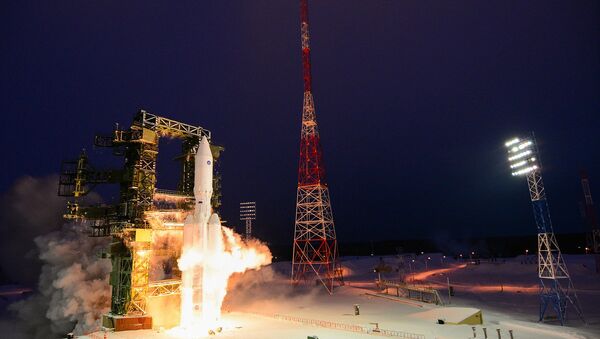Later, Russian Defense Minister Sergei Shoigu confirmed the successful launch in a phone call to Russian President Vladimir Putin, the Defense Ministry said.
The Angara family of space launch vehicles is designed to propel cargo weighing between 2,000 and 40,500 kilograms (4,400 — 89,300 pounds) into low Earth orbit. It has been in development since 1995.
Russian Space Agency Roscosmos said that the new Angara rocket would give Russia independent access to space, and the possibility to advance to a new level of technological development. The Angara will have the ability to put satellites and other equipment into geostationary orbit. All of the parts which are used in the rocket's development have been produced in Russia, minimizing the country's reliance on partnerships with other space agencies. Additionally, environmentally-friendly fuel will be used in the rocket, including oxygen and kerosene.
The Angara-A5, the largest rocket ever launched from the Plesetsk Cosmodrome, weighs 773 tons. The family of Angara rockets includes light-, medium- and heavy-lift launch vehicles.
The Angara family of rockets are designed to complement Russia’s Soyuz rocket, currently the only vehicle in the world capable of taking astronauts to the International Space Station. The Angara series will replace the Proton rocket family, which was previously used to put satellites, manned vehicles, and other equipment in low-Earth orbit.
Flight tests for the Angara series began on July 9, when the light-lift launch vehicle Angara-1.2PP was successfully launched after the date had been postponed several times due to additional testing.
The Angara-A5 will be launched from both the Plesetsk Cosmodrome and from the Vostochny launch pad in the Amur Region, which is currently under construction.
The first manned Angara-A5 flight is set for 2018; the rocket will take off from the Vostochny Cosmodrome.



